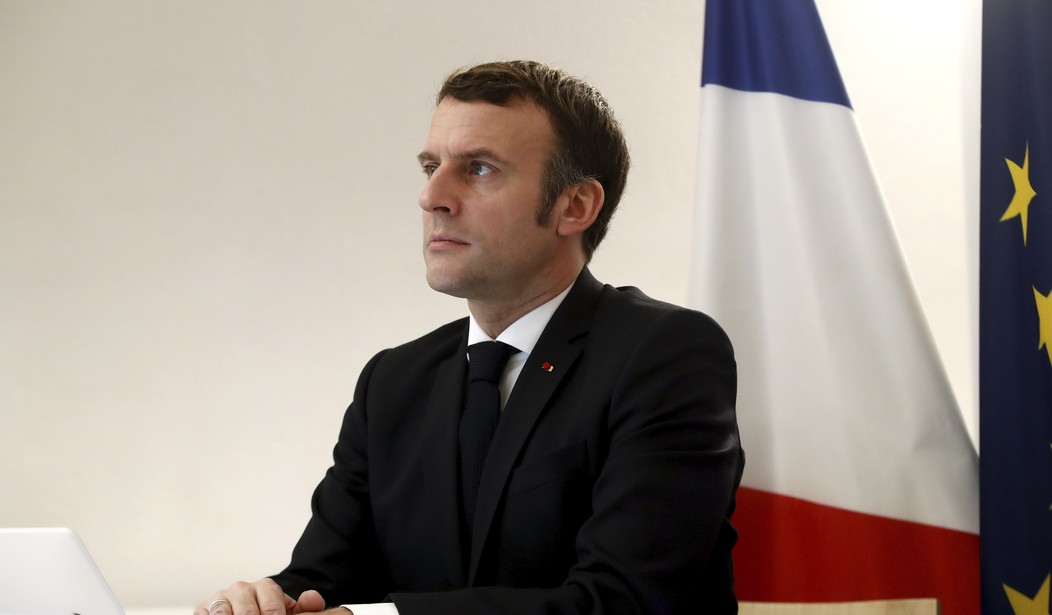At this point, the west has largely met one of Volodymyr Zelensky’s many demands and will be delivering battle tanks for his use. Several European nations are sending as many as 180 Leopard tanks to Ukraine, while the United States will send 31 of ours. But under the covers, the way this arrangement rolled out may be far more instructive than any shift in the balance of power between Moscow and Kyiv. At Defense One, research professor John R. Deni of the U.S. Army War College explains how Europe’s initial reluctance to send any tanks to Ukraine until America made the first move speaks volumes about the future of the western alliance. And it will likely impact America’s plans to shift our focus to the western Pacific to counter the rising threat posed by China, as well. In short, we will never be able to fully make such a shift because Europe clearly has no intention of defending itself against any potential Russian threats in the future.
Deliberations over whether to send tanks to Ukraine took longer than many hoped, but the end result should nonetheless help increase the odds of a Ukrainian victory. The deal was clinched by U.S. willingness to take the lead, announcing it would supply Ukraine with American-made M1A2 Abrams tanks, even though these tanks require a more robust maintenance and logistical support capability. Moreover, Washington will only provide 31 Abrams tanks—just 10 percent of what Ukraine has apparently indicated it needs—and they won’t arrive in any case for several months, meaning they probably won’t play any role in an expected Ukrainian counteroffensive this spring.
The fact that Germany in particular refused to provide tanks without America doing so first is frustrating to Washington. Berlin alone has the economic, technological, and political heft to lead Europe; other candidates all fall short for various reasons. Great Britain is looking increasingly less “great,” thanks in large part to Brexit, which is forcing its military to shrink. France has the will to lead but lacks the economic and military strength; Macron’s commitment to expand military spending from 2024-30 will take years to yield results. Paris also lacks the respect of Eastern Europeans, who perceive it as too willing to negotiate with Moscow over the heads of Warsaw, Prague, Vilnius, and so forth. Farther afield, Italy and Spain appear largely uninterested in a broader leadership role in Europe – perhaps more importantly, they both have their eyes trained on instability to the south and the waves of migrants it generates.
Deni’s full analysis is definitely worth a read and he is highlighting a rather harsh reality when it comes to the future of NATO. It’s not that there isn’t any military buildup currently taking place among our European allies. Italy is working with Japan on Europe’s next generation of fighter jets. That’s encouraging, but it doesn’t bring them anywhere near the level of self-defense capabilities that America has urged them to develop.
At the end of world war 2, the United States effectively took over the defense of Europe, creating an “umbrella” of both conventional and nuclear military might that would dissuade any threats against the NATO block from adversaries to the east. This was an arrangement that the Europeans happily embraced, allowing them to save vast amounts of money that would otherwise have to go into their own defense budgets.
This situation quickly became the new normal and there were no more major wars on European soil for the next seventy years or more. But it also left Europe in the position of constantly requiring a babysitter to ensure that nobody else showed up to bully them. The fact that not even Germany was willing to risk provoking Putin by sending tanks to Ukraine until we did it first is only the latest symbol of this unbalanced relationship.
But the situation with China can’t be ignored. We have to consider the possibility that we could be facing a war with the Chinese, either directly or by proxy, in the not-too-distant future. The Pentagon has already been working on reallocating resources into the western Pacific in anticipation of such a possibility. But we simply don’t have the manpower and equipment to build up our forces in South Korea, the Philippines, and other allied regions to the levels we typically keep in Europe without drawing down some of our forces there.
And yet Europe is unable or unwilling to fill the void that would be left by a large-scale downsizing of American military power on the continent. So what will the plan be going forward? If the current administration has such a strategy ready to go, they aren’t telling us about it. But this situation isn’t going to be able to remain on hold forever, and it’s highly problematic.









Join the conversation as a VIP Member